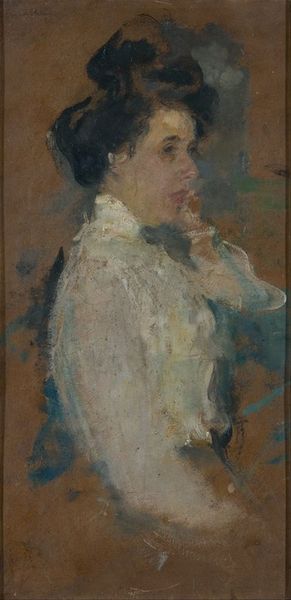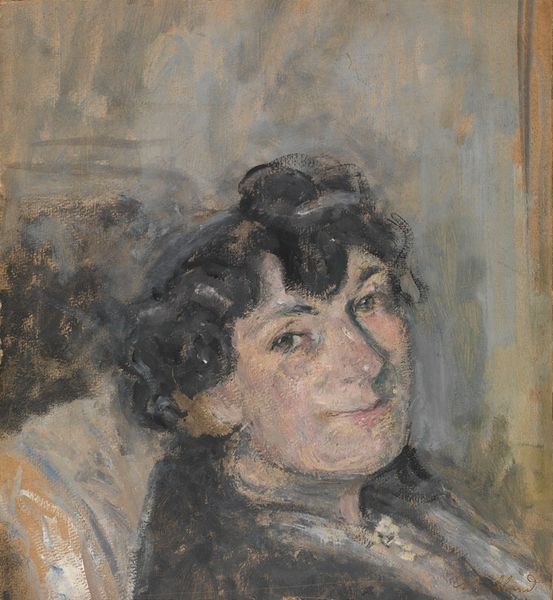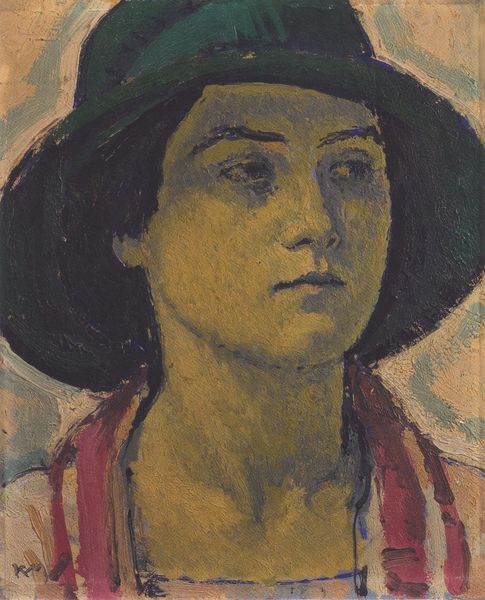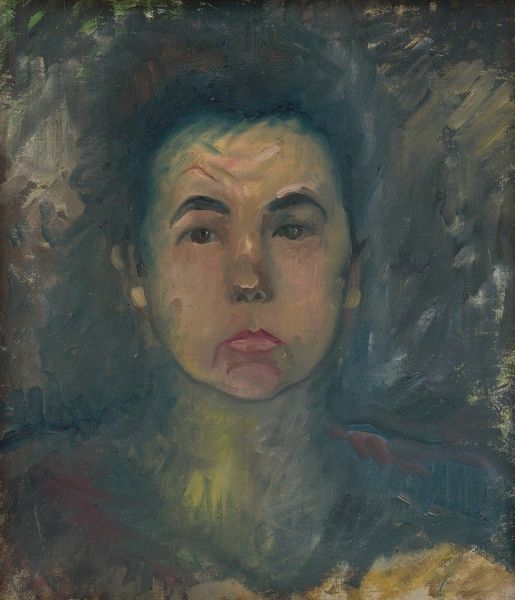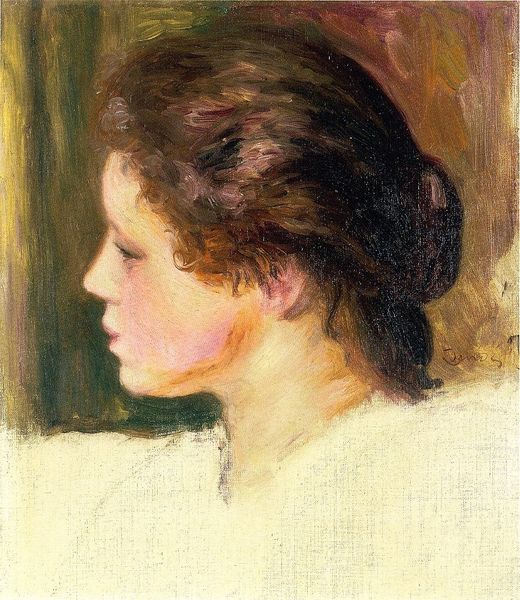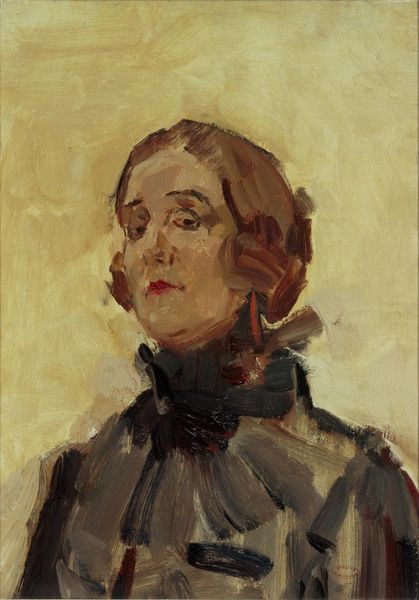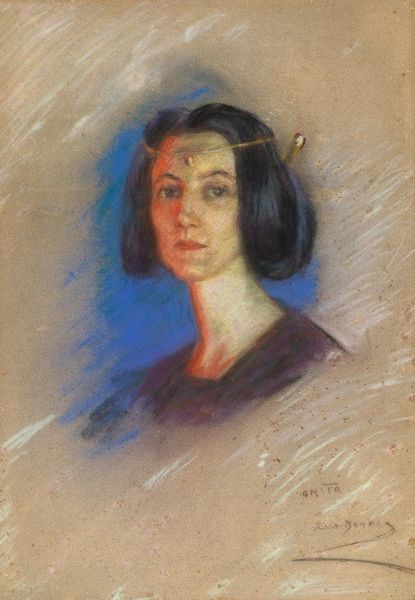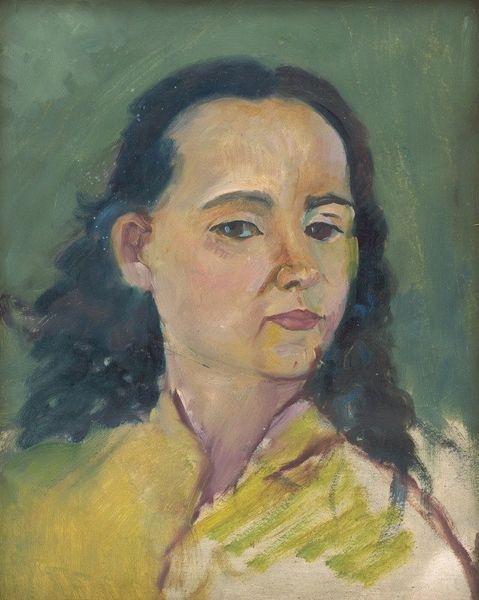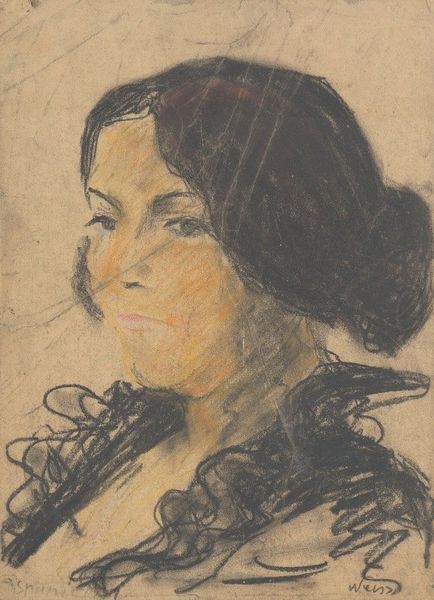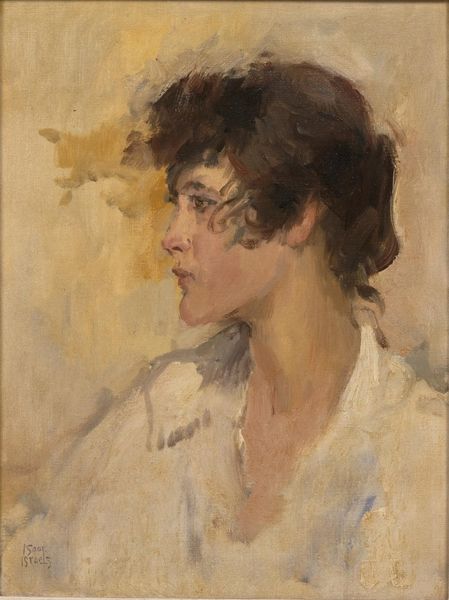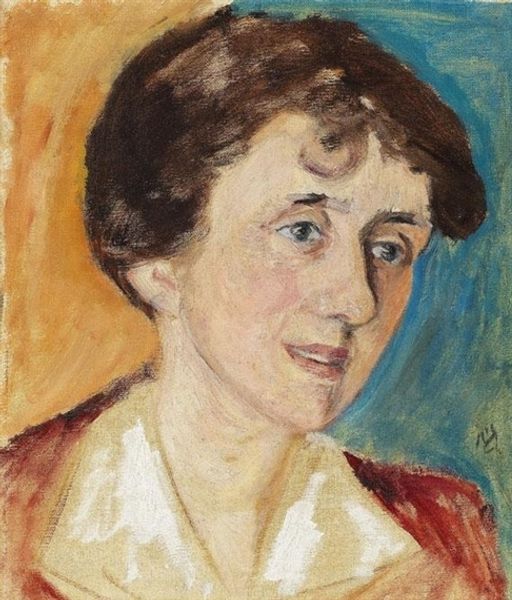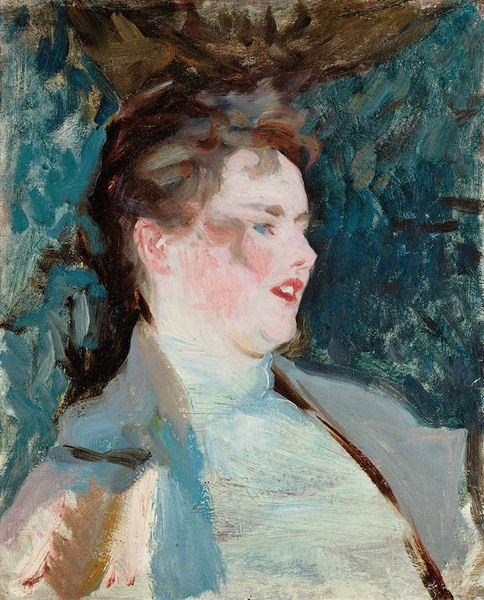
drawing, oil-paint
#
portrait
#
drawing
#
oil-paint
#
oil painting
#
portrait drawing
#
portrait art
#
modernism
#
watercolor
Copyright: Public Domain: Artvee
Curator: This is "Portrait of a Young Woman with a Braid," believed to be rendered by Arnold Peter Weisz-Kubínčan sometime between 1925 and 1930, using oil paint. What strikes you first? Editor: It has such a pensive air, doesn't it? The colors are muted, almost somber, and the way the artist captures her profile gives her this contemplative stillness. There's a real vulnerability there, too. Curator: Vulnerability is definitely a key aspect. The young woman is depicted in profile, turned away from the viewer in a way. We're observers to her private space, catching just a glimpse. In portraiture, this turning away can be interpreted in different ways. It has roots, for example, in mourning iconography and ideas about memory. Editor: Absolutely. I find myself thinking about the social constraints women faced during that period. The quietness might also suggest a lack of agency, her role carefully prescribed by society. We are faced with such subtle signs here and these can lead us to so many possibilities of interpretation. Curator: It's a potent commentary, intentional or otherwise. Weisz-Kubínčan was working during a period of great social change, but also ongoing repression in many parts of Europe. Consider the single braid; hairstyles are never neutral. Braids could signify youth, tradition, even ethnic identity. In what ways could it be both restrictive, trapping her, but also perhaps a potent cultural symbol? Editor: That duality is fascinating. Thinking about braids today, too, it still is complicated. The control and manipulation of Black hair comes to mind and the use of braiding for cultural, political and aesthetic power. What looks effortless takes effort, so what labor of identity and tradition do we find mirrored here as well? Curator: You're making me see so much more complexity in this seemingly simple image. What was originally presented as a formal depiction reveals itself to be deeply personal, social, and maybe even subtly rebellious. Editor: Exactly, this painting prompts us to reconsider these complexities through generations, revealing persistent conversations on the interplay of culture, self, and resistance. Curator: Indeed. Thank you. What originally appeared quiet has many layers, both intimate and very far-reaching in implications for history, present and beyond.
Comments
No comments
Be the first to comment and join the conversation on the ultimate creative platform.
